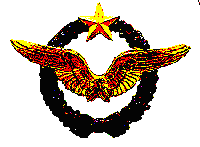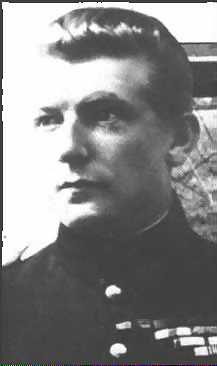
Lt.Charles Nungesser

 Charles Eugene Jules
Marie Nungesser was born in Paris on March 15, 1892. He was France's third leading ace
with 45 victories. Charles Eugene Jules
Marie Nungesser was born in Paris on March 15, 1892. He was France's third leading ace
with 45 victories.As a child, Nungesser became interested in competitive sports, in particular, boxing. He attended the Ecole des Arts et Meiers where he was a fair student but excelled in sports. After dropping out of school he sailed to Brazil with the intent of working on his uncle's sugar plantation. Upon arrival at Rio de Janeiro his uncle was no where to be found so Charles went on to Buenos Aires, Argentina. In Argentina, Nungesser found work as an auto mechanic, and became interested in auto racing. When he was seventeen, he started racing cars professionally. During this time he met another Frenchman who had access to an airplane. Nungesser talked his friend into letting him take the Bleriot into the air by himself and after flying the plane around for a few minutes, made a successful landing. Nungesser flew for two weeks, learned to fly and started an aviation career. After five years, Nungesser finally found his uncle and worked for him at his plantation. World War I broke out and Nungesser returned to France where he joined the Second Hussars. While on patrol one day, Nungesser and several fellow soldiers, stopped a German staff car, shot the occupants, and drove back at high speed to safety. His superiors were so impressed, they gave him the car and the Medaille Militaire. At this time Nungesser requested and was approved for a transfer to the Service Aeronautique. Nungesser shot down his first plane, an Albatross, when he left his field without permission. He was awarded the Croix de Guerre and given eight days in house arrest. After this, he requested he be sent to a fighter group and this was granted in November of 1915.
The commander of the squadron told Nungesser that if he was going to do aerobatics to do them over the German lines. Nungesser jumped into his plane, flew to the nearest German field, and gave them quite a show. He reported back to his commander, told him what he had done and was put under arrest again. In January 1916, Nungesser broke both legs, pierced the roof of his mouth with the planes control stick, and dislocated his jaw in a serious flying accident. Within two months he was flying again, hobbling to his aircraft on crutches. By the end of March he was back with N 65 and in the first week of April he made up for lost time over Verdun shooting down several enemy aircraft and balloons. One leg did not heal properly, so he underwent surgery and insisted that no anesthesia be given him. He was at last officially ordered to rest and agreed on condition that he would be allowed a roving commission on his retum to combat. Nungesser returned to battle in May 1917. He had a new Nieuport with a 130 hp Clerget in place of the more usual 110 hp Le Rhône. Based at first on the Channel coast he shot down six aircraft in two weeks. The Germans soon knew the ace was back and on May 12th a single Albatros dropped a message challenging Nungesser to a single combat over Douai. When the Frenchman got there six enemy fighters were waiting. The grimly marked Nieuport shot down two of them in flames and the rest of the pack scattered. German perfidy was not the only additional danger in this most dangerous of environments. The same day as the German challenge, Nungesser was attacked by a haplessly blundering RFC pilot whom he had no alternative but to shoot down. After this broad stripes of red, white and blue were added to the cockades on the top wing During his fighting career Nungesser sustained many injuries including: Skull fracture, brain concussion, internal injuries (multiple), five fractures of the upper jaw, two fractures of lower jaw, piece of anti-aircraft shrapnel imbedded in right arm, dislocation of knees (left and right), re-dislocation of left knee, bullet wound in mouth, bullet wound in ear, atrophy of tendons in left leg, atrophy of muscles in calf, dislocated clavicle, dislocated wrist, dislocated right ankle, loss of teeth and contusions too numerous to mention." Injuries sustained by Charles Nungesser during World War I
On 16 August Nungesser sent his thirtieth victim, a Gotha, crashing into Houthulst forest. But physically he was at the end of his strength. On 12 September he set off from Dunkirk to fly to Paris when he was set on by a solitary Halberstadt DII, itself well behind the Allied lines. After a fight lasting half an hour Nungesser landed at Le I'ouquet in despair with his fuel exhausted. The German also landed and with a wave he opened the throttle and took off again. Nungesser took it as a personal humiliation. The Allieds had suffered more than humiliation throughout the spring of 1917 and Nungesser bore the scars of his many close encounters with death. That September the terrible news of Georges Guyuemer's disappearance further shook the morale of the Aviation Militaire. Nungesser was given only a slight respite when for a period in the autumn of 1917 he undertook the combat training of new pilots. He was a master of the art of air fighting. One of his pupils reached a score of five in as many days. Then in December returning to Paris at night in one of the powerful touring cars in which he revelled, he struck a patch of ice at speed and the car overturned. Nungesser was thrown clear but again seriously injured. His faithful mechanic Pochon lay dead in the wreckage. Nungesser was once again in the hospital and for the rest of the war his returns to the front were interrupted by frequent spells of hospitalization. He scored his 40th victory flying a Nieuport 23 on fifth of July 1918 but his great rival René Fonck had already inherited Guynemers mantle with a score of forty-five. On August 14th, Nungesser scored again with two balloons but once again he was slightly wounded. The next day he brought his score to forty-five and earned his fifteenth citation. At that score, and laden with honors from the French and Allied governments, he finished the war.
After the war he founded a flying school at Orly with a war-surplus Morane-Saulnier Am. The venture failed and so he went to America with a Hanriot HD-i again bearing his grim wartime insignia. Even these years of wild barnstorming could not appease his taste for adventure and he resolved to join the race to cross the Atlantic from Paris. He commissioned an aircraft from Levasseur, a flotation-equipped modification of their PL8 three seater built for the new French carrier, the Bearn. Nungesser's death remains a mystery. On 8 May 1927,
he and Francois Coli left LeBourget Field near Paris on an historic nonstop flight to New
York in a biplane called l'Oiseau Blanc (the White Bird). They were never seen
again. Following an exhaustive investigation, the French government published a report in
1984 which concluded that Nungesser probably reached North America. Médaille Militaire citation "Brigadier of the 2nd Light Cavalry Regiment; on 3 September 1914, with his officer having been wounded during the course of a reconnaissance, he at first sheltered him, then with the assistance of several foot soldiers, after having replaced the officer who was disabled, he secured an auto and brought back the papers by crossing an area under fire by the enemy." Chevalier de la Legion d'Honneur citation, 4 December 1915 "Pilot detached at his own request to an Escadrille in the rear, has never ceased since his arrival to seek any occasion to fly; flying up to four hours, thirty minutes each day in spite of the inclement weather. During the course of his last combat he gave proof of the highest moral qualities by approaching to within 10 meters the enemy machine he was pursuing firing in response up to the last moment. He succeeded in downing his adversary which caught fire and exploded in front of the French trenches." Officier de la Legion d'Honneur citation, 19 May 1918 "Incomparable pursuit pilot, with exceptional knowledge and magnificent bravery, which reflect the power and inflexible will of his ancestry. In the cavalry, where during his first engagements he earned the Médaille Militaire, then in a groupe de bombardment where for his daily prowess he was cited several times in orders and was decorated with the Legion of Honor, and finally with an Escadrille de chasse, for thirty months his exploits were prodigious, and he always presented himself as a superb example of tenacity and audacity, displaying an arrogant contempt for death. Absent from the front several times because of crashes and wounds, his ferocious energy was not dampened, and he returned each time to the fray, with his spirit undaunted gaining victory after victory, finally becoming famous as the most feared adversary for German aviation. 31 enemy aircraft downed, three balloons flamed, two wounds, fifteen citations." Click here for a brief history of the Legion of Honor |